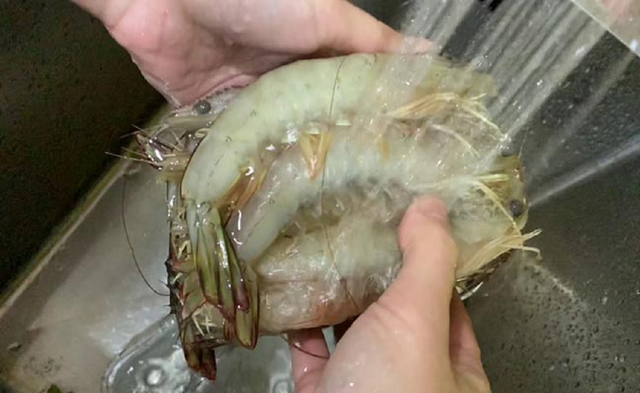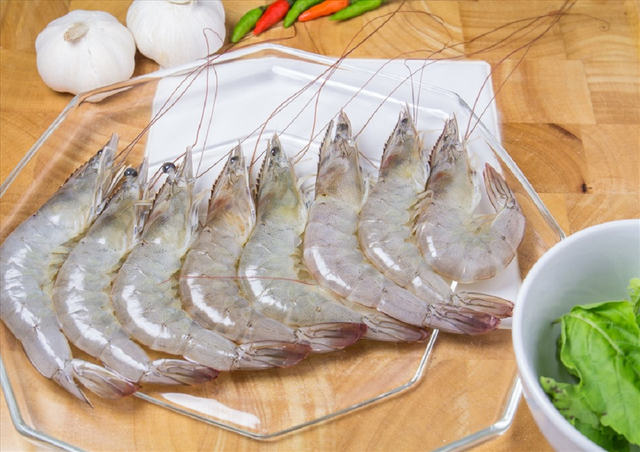Tips for Storing Fresh Shrimp for Extended Periods
Shrimp is a nutritious food favored by many for daily meals. It can be prepared in a myriad of ways.
Fresh shrimp always tastes the best. However, many homemakers, upon encountering delicious shrimp, tend to purchase in bulk for refrigerated storage and gradual consumption.

Shrimp should be cleaned before freezing. Pictured for illustration purposes.
Shrimp is a delectable seafood, yet it is challenging to preserve. If not handled properly, the meat becomes mushy and bland post-freezing.
To maintain the shrimp’s flavor during cold storage, consider the following method.
Rinse the shrimp with water to remove impurities, then let it air dry. Divide the shrimp into portions sufficient for a single meal, placing each in a separate plastic bag. Seal the bags tightly after removing excess air.
Use food wrap to securely cover the shrimp bags, preventing air and moisture infiltration.
Finally, store the shrimp in the freezer. When needed, thaw the shrimp by submerging the sealed bag in cold water.
– Sprinkle with sugar: Prior to storage, trim the shrimp’s long whiskers. Arrange the shrimp in containers, sprinkling a little sugar after each layer. Repeat this process until all shrimp are stored.
Note: Allocate enough shrimp for a single meal in each container. When cooking, simply thaw one container.
This method prevents discoloration and dehydration while enhancing freshness and eliminating the shrimp’s fishy odor.
– Ice inclusion: Clean the shrimp, trim the long whiskers, and place them in a food container. Add several ice cubes and seal the container. Store in the freezer. This technique preserves the shrimp’s freshness for up to a month.
For convenient preparation, remember to divide the shrimp into smaller containers. This way, you only thaw what you need without compromising the remaining shrimp’s quality.
– Salt application: Salt is another effective preservative. Place the shrimp in a container and add 1-2 spoons of salt. Seal and shake the container to evenly distribute the salt on the shrimp’s exterior. Portion the shrimp into meal-sized containers, seal, and refrigerate.
Note: This method maintains freshness for about two weeks. Avoid prolonged storage as salt may affect the shrimp’s flavor.
This technique gradually freezes the shrimp, preventing sudden freezing that causes blackening of the head and diminishes freshness. It also prevents the refrigerator from absorbing the shrimp’s odor.

Fresh shrimp can become dry, mushy, and discolored if not stored properly. Thus, it’s essential to master these preservation techniques to maintain its quality. Pictured for illustration purposes.
Useful Tips for Selecting Fresh and Delicious Shrimp
The first critical step is to choose fresh shrimp. The best shrimp is lively, swimming, and jumping vigorously. Opt for shrimp with clear and shiny shells, intact heads, and legs free from blackening.
Steer clear of shrimp with cloudy eyes and legs or heads showing signs of blackening.
The head, legs, and body of the shrimp should be firmly attached, exhibiting flexible joints.
Be wary of abnormally large shrimp that feel taut, with noticeable gaps between the meat and shell. This could indicate the presence of fillers to increase weight.
Source: Nguoiduatinp>































